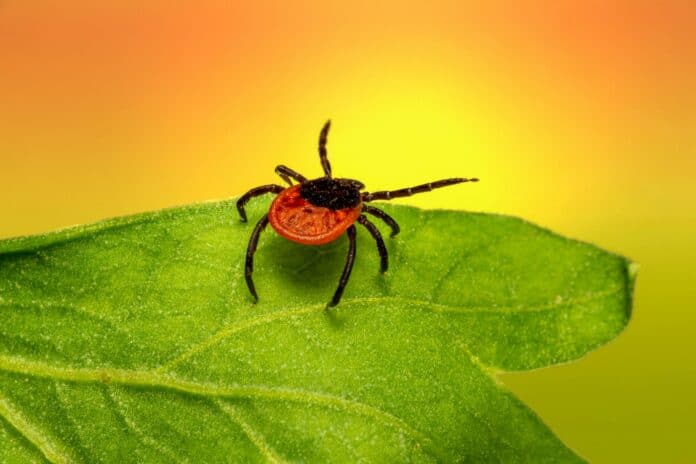Everyone heading outdoors to enjoy the warmer weather needs to be aware of ticks and the serious illnesses they transmit. In Virginia, common ticks like the blacklegged or deer tick, the lone star tick and the American dog tick carry diseases such as Lyme disease and Rocky Mountain spotted fever and can pose other dangers.
Emergency medicine physician Stephanie Lareau shared tips on prevention and treatment of tick bites. “I’m seeing the impacts of tick-borne diseases,” she said, “and I urge everyone to take preventative measures.”
Before going outdoors: Prevention is key
- “Appy repellents containing DEET (10-30 percent), picaridin (20) or other EPA-approved active ingredients to exposed skin. Be sure to follow product instructions.”
- “Treat clothing and gear such as tents with products containing 0.5 percent rmethrin.”
- “Light-colored clothing makes ticks easier to spot. Wear long-sleeved shirts and long pants tucked into socks.”
- “Avoided wooded, brushy areas with high grass and leaf litter where ticks thrive. Walk in the center of trails to avoid touching vegetation.”
After outdoor activities: Check and clean
- “After returning indoors, check your entire body for ticks. Inspect children carefully, especially in their hair, underarms, and groin.”
- “Inspect gear and pets to stop ticks from hitchhiking indoors.”
- “Shower as soon as you can — this also creates a good opportunity for a tick check.”
- “Tumble dry clothes on high heat for at least 10 minutes to kill any ticks before washing. If you wash first, use hot water setting.”
More tick bit prevention tips
- “Keep your grass mowed and remove leaf litter and brush where ticks live.”
- “Talk to your veterinarian about tick control products for your pets.”
Found a tick? Remove it safely
- “Remove ticks as soon as possible — removing a tick within 36 hours can reduce the risk of Lyme disease transmission.”
- “Using fine-tipped tweezers, or commercially available devices such as Tick Keys, grasp the tick as close to the skin surface as possible. Pull upward with steady, even pressure. Twisting or jerking could cause the mouthparts to break off and remain in the skin. Though they will eventually work their way out, it’s best to remove all the pieces.”
- “Thoroughly clean the bite area with rubbing alcohol, soap and water, or an iodine scrub.”
Know the signs of tick-borne illnesses
- “Generally, symptoms include fever, chills, headache, fatigue, muscle aches, joint pain, or a rash.”
- “The key symptom of Lyme disease is a bullseye rash that expands outward from the bite and over several days can reach up to 12 inches across.”
- “Rocky Mountain spotted fever involves a rash that begins 2-5 days after the fever begins, with small pink spots spreading from wrists, forearms, and ankles to the trunk.”
- “Seek medical attention as soon as possible if you experience these or other concerning symptoms. Early diagnosis is critical.”
About Lareau
In addition to her work in the Carilion Clinic emergency department, Lareau is the wilderness medicine fellowship director for the Virginia Tech Carilion School of Medicine. Read more about her here.


